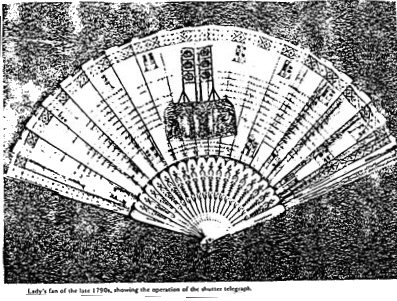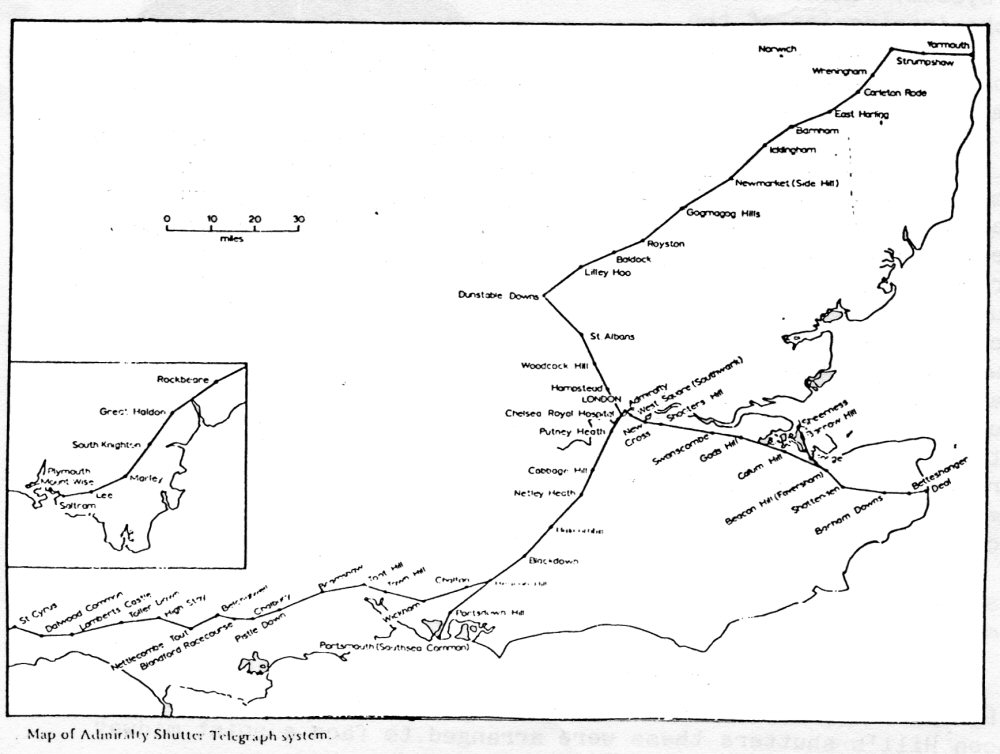THE ADMIRALTY TELEGRAPH
SYSTEM IN THE ALRESFORD AREA:
PART I – THE SHUTTERS
by John Adams
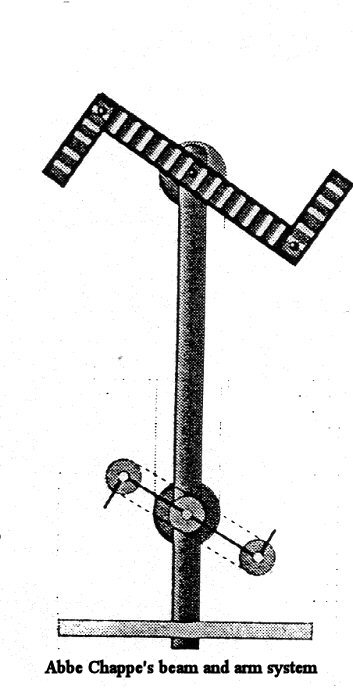 For centuries the only means of communication
between Their Lordships of the Admiralty
in London with their admirals and ships
at their ports and stations had been
by hand : using horses on land and despatch
vessels by sea. On the outbreak of the
Napoleonic Wars the Admiralty became
interested in a system of long distance
signalling developed by the French for
communication between Paris and the Army.
It had been devised by the brothers Chappe
, led by Claude, an Abbe'. Use was made
of semaphore arms fixed on a mast on
purpose-built buildings averaging nine
or ten miles apart.The drawings of Chappe's
system were captured and after hearing
an account by a British officer of the
use of windmill sails by the French for
signalling, the Admiralty let it be known
that they were interested in a telegraph
system which would link London with the
main naval bases. In 1795 they introduced
signal towers along the coasts, using
balls and flags, but as these had fixed
meanings they were limited in scope.
A coded alphabetical or numeral system
was needed.
For centuries the only means of communication
between Their Lordships of the Admiralty
in London with their admirals and ships
at their ports and stations had been
by hand : using horses on land and despatch
vessels by sea. On the outbreak of the
Napoleonic Wars the Admiralty became
interested in a system of long distance
signalling developed by the French for
communication between Paris and the Army.
It had been devised by the brothers Chappe
, led by Claude, an Abbe'. Use was made
of semaphore arms fixed on a mast on
purpose-built buildings averaging nine
or ten miles apart.The drawings of Chappe's
system were captured and after hearing
an account by a British officer of the
use of windmill sails by the French for
signalling, the Admiralty let it be known
that they were interested in a telegraph
system which would link London with the
main naval bases. In 1795 they introduced
signal towers along the coasts, using
balls and flags, but as these had fixed
meanings they were limited in scope.
A coded alphabetical or numeral system
was needed.
By coincidence two men, both clergymen, thought of a shutter system almost simultaneously. The Reverend John Gamble, Chaplain to the Duke of York, produced a machine having five vertical shutters or 'valves' : but their Lordships accepted the alternative idea of the Reverend Lord George Murray, fourth son of the third Duke of Atholl, consisting of six shutters in two vertical columns which were allocated letters, and later numbers, reading from left to right and top to bottom. The combination of letters produced 63 changes, all having separate meanings in a phrase or code book. Plain language was also used. The line to Portsmouth was completed in 1796 and by the time that to Plymouth was finished a code had been made using numerals, extending the scope and flexibility of the system. Those interested in the intricacies of the way the code was used are recommended to read T.W. Holmes (see sources).
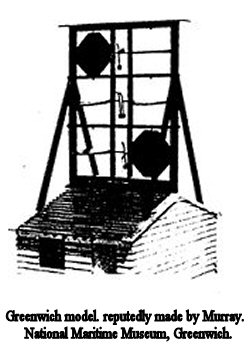
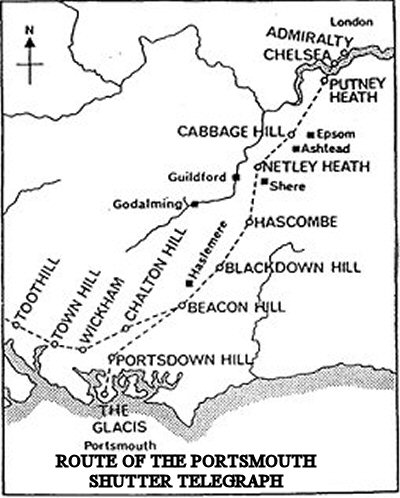
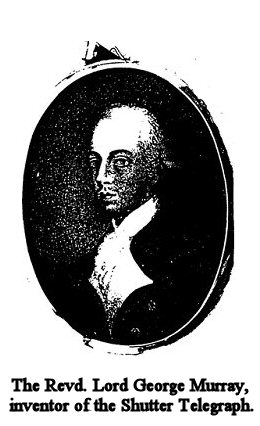
| Name of Station | Situated | Map marking today |
| Beacon Hill | 795 ft. E.S.E. 11/2 miles from South Harting | Near by 'Beacon House' |
| Chalton Down | 476 ft. W. of village at old windmill off Windmill Hill A .3 road | Windmill |
| Wickham | 300 ft. E'N. I t. miles from church | Near Rooksbury Park |
| Town Hill | E.S.E. 2./2 miles from South Stoneham church. Southampton | Town Hill Park |
| Toot Hill | S.E. 2 miles from Romsey.Nr. Chilworth and Nursling | Near by ‘Telegraph Wood’ |
| These telegraph stations were maintained throughout the war, and were kept on through the Peace of Amiens which lasted from 25th March 1802 until 18th May 1803 | ||
The files of the Hampshire Chronicle indicate that Alresford was used as a supply and home base by those manning them, although details are scanty. Only the sites have been recorded with some accuracy.
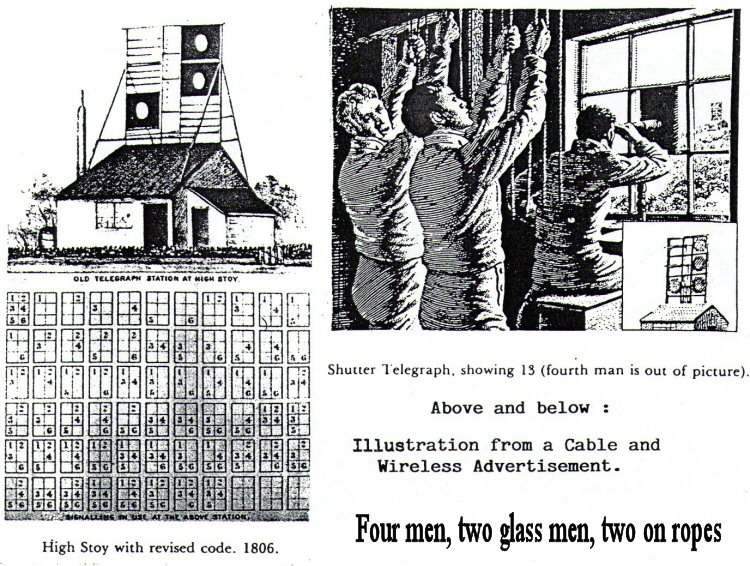
The shutter line to Plymouth did not pass directly through the Alresford district, but skirted the area, close enough for the men at Beacon Hill and Chalton Down, as well as Wickham, to obtain their operating requirements from Alresford and to live here. It is recorded that two "telegraph men" lived in Ropley. The writer suggests, therefore, that the Shutters are of sufficient local interest to form the first part of the account of the telegraph system under discussion. The Semaphores, which replaced the Shutters, took a new course right across our area on their route to Plymouth. Thus, this paper is an introduction to the second, which concerns us much more closely.
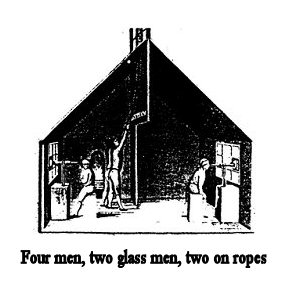
When completed the lines to Portsmouth and Plymouth diverged at Beacon Hill, and so that the next two stations could both see Beacon Hill's shutters these were arranged to face a point midway between the two lines of sight.
At each station two "glass men" read the adjoining stations using "achromatic telescopes"invented by Mr. John Dollond so contrived to remedy the aberration arising from colours, or the refrangibility of the rays of light, as quoted by T.W. Holmes.Instances of transmission speeds include : London and Portsmouth, one minute for time signal and acknowledge. London and Plymouth, three minutes for the same.
Ordinary signals took longer, of course, but in "open weather" (what we now know as good visibility), times of 15 and 17 minutes are recorded for coded messages.
Experiments were made with lanterns for night use of the shutters, but were conspicuously unsuccessful. In bad visibility horses were used if the message was urgent, the animal and rider going from station to station until visibility permitted normal transmission. A journal was kept at each station, which was usually manned by two glass men and two ropes men (to operate the shutters) taking turns. Some shutters had a lieutenant R.N. in charge : at others a senior rating known as a Foreman. At important points such as the terminals there would be an extra hand.
Little is known about the Shutters, although the Semaphores which succeeded them have been fully documented. No living accommodation seems to have been provided, the two men living at Ropley previously mentioned would have had to return home at the end of the day from Chalton Down, or else find a makeshift resting place at the station.
T.W. Holmes compares the Shutters of the Napoleonic War with the temporary war-time innovations of the A.A. guns or searchlights of the Second World War. Years later, he says, who knows where they were? (on the golf course, or some other place) or who manned them? : there seems to be almost no trace left of the four or five men in each station who worked in "two rooms and a coal shed".
In 1814, with Napoleon despatched to Elba, the Admiralty ordered the Shutters to be dismantled. After Waterloo in 1815, they decided that a permanent semaphore system was to be constructed using machines with movable arms. As mentioned, this system passed through the Alresford district on its way to Plymouth and will be reviewed in Part II.
John Adams, October 1995.
Sources and further reading:
The Semaphore. T.W. Holmes. A.H. Stockwell
Ltd. 1983.
Signal ! Captain Barrie Kent
R.N. Hyden House. 1993.
The Old Telegraphs. Geoffrey Wilson. W & J
Mackay. 1976.
The Naval and Miltary Record.
Various issues of the 1860s. Hampshire
Chronicle files.
